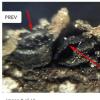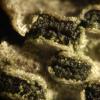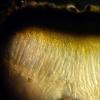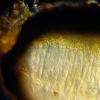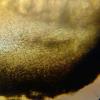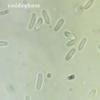
09-11-2025 13:20
Hello.A tiny ascomycete, appearing as erupting gra

08-11-2025 00:29
 Francois Guay
Francois Guay
I found this species in Quebec, Canada, on herbace

04-11-2025 09:07
Hello.A suspected Hymenoscyphus sprouting on a thi

04-11-2025 12:43
 Edvin Johannesen
Edvin Johannesen
Hi! One more found on old Populus tremula log in O

03-11-2025 21:34
 Edvin Johannesen
Edvin Johannesen
These tiny (0.4-0.5 mm diam.), whitish, short-stip
Hello everyone.
I'm not sure if it was a branch of Salix, I also take into account Populus.
Hyaline spores, although ascomata looks mature?
greetings
Mirek
Before publishing this thread I read "A molecular phylogenetic reappraisal of the Hysteriaceae, Mytilinidiaceae and Gloniaceae (Pleosporomycetidae, Dothideomycetes) with keys to world species" and the genre proposed by you seemed very likely due to the construction of spores.
However, she wondering too much spore's length. In combination with a very unusual way of growth (under the bark), I could not decide on it.
Nothing else, however, about more similar features, so I found the name of him as a result; Hysterobrevium cf. smilacis.
Thank you and best regards
Mirek
Hi
I think you are wrong with the Hysteriales. It doesn't look the same macroscopically and microscopically. I don't have time to do research, but I would advise you to abandon this way.
Microscopy reminds me more species like : http://www.ascofrance.com/search_recolte/4803
But you have first to give a complete description of ascomata.
Alain
Thank you for the hint.
I have already seen these mushrooms in this forum, but I could not remind their names.
Only spores fit into Hysterobrevium.
Macroscopic features were completely inappropriate and therefore in the title I wrote "unknown".
Now I know where to look for answers.
Thank you and best regards.
Mirek
Hi Sergey,
I agree with you.
By the way, I never said it was a Dothiora species (but why not ?), but I only wanted to say that microscopy could fit with other fungi.
It will be interesting to further research.
Alain
I specially showed various variants of Ascomata but these crackled were very little. There may be several reasons for this. I suspect, however, that the cause may be excessive dried substrate. A few weeks did not rain in my area and the substrate is strongly dried. I made photos before hydration.
My knowledge in this topic is quite modest but comparing the features, I come to the conclusion that my collection is the most similar to Dothiora Sphaeroides.
Does anyone have a article about this genre?
The information found on the net is quite scarce :(
I do not have a description of this species, so I can not analyze all the features.
greetings
Mirek
Hi Mirek,
Litterature attached.
Alain
Thanks to Alain!
I will have something to do on the evening, now I'm at work.
I quickly reviewed the article and it seems that Ascomata's cracks are not something extraordinary in this kind (page 725).
greetings
Mirek
It was hard, but I advised the translation.
Alain was right :)
I checked the wood structure. I'm not good at this but the wood is more suitable to Populus.
A few days I kept Ascomata in humid maturing until Conidiophores emerged.
I counted the septum spores.
This species fits my in all details :)
Thank you
Mirek

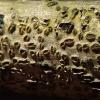
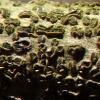
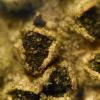
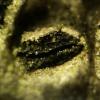
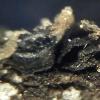
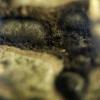
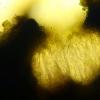
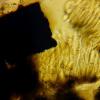
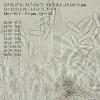
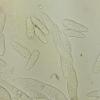
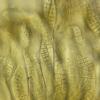
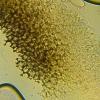
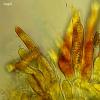
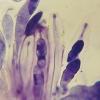
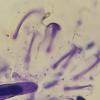
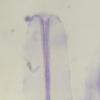
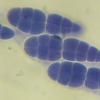
 Froidevaux-Dothioraceae-Thesis-0001.pdf
Froidevaux-Dothioraceae-Thesis-0001.pdf